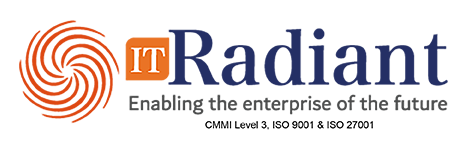In an era of global pharmaceutical distribution and rising concerns over counterfeit medications, serialization in pharma has emerged as a critical solution for safeguarding public health. With billions of prescription drugs circulating through complex global supply chains, pharmaceutical serialization ensures that each product can be uniquely identified, tracked, and verified at every stage—from manufacturer to patient.
Serialization in pharma refers to the process of assigning a unique serial number to each unit, a process well-supported through our drug serialization services. This identifier is linked with key product data such as batch number, expiration date, and Global Trade Item Number (GTIN), forming the foundation for pharmaceutical traceability.
This unique serial number is then captured, stored, and shared through interconnected IT systems to enable real-time visibility, supply chain transparency, and regulatory compliance.
Why Serialization Is Essential
The track and trace capabilities enabled by pharmaceutical serialization address three fundamental challenges:
- Counterfeit Drug Prevention: According to the World Health Organization (WHO), 1 in 10 medical products in low- and middle-income countries is substandard or falsified. Serialization pharma systems help detect and eliminate these threats by enabling the authentication of each product unit.
- Product Recalls: Pharma serialization simplifies targeted recalls by enabling manufacturers and regulators to trace affected products down to the individual unit, drastically reducing response time and potential harm.
- Global Compliance Requirements: Many countries now mandate serialization in the pharmaceutical industry under various regulatory frameworks—most notably the Drug Supply Chain Security Act (DSCSA) in the United States and the Falsified Medicines Directive (FMD) in the European Union.
Compliance with DSCSA and Global Regulations
Under the DSCSA, pharmaceutical companies must ensure serialization at the unit level. Many firms now leverage SAP-based pharma serialization compliance solutions to streamline traceability and meet global mandates. This regulation mandates the creation of an interoperable system by 2024 for drug supply chain security, capable of identifying and tracing prescription drugs distributed within the country.
Similarly, the FMD in Europe requires pharmaceutical serialization and tamper-evidence features on all prescription drug packaging. Other regions, including China, Brazil, India, and Russia, have implemented or are finalizing serialization requirements for pharma to curb counterfeit drugs and ensure patient safety.
The Technical Landscape of Serialization Pharma
Serialization in pharma involves a complex, multi-layered technical ecosystem that goes far beyond just printing barcodes. At the line level, hardware such as cameras, printers, and scanners are used to generate and verify 2D data matrix codes on individual product units. This is supported by site-level software that manages pharmaceutical serialization data and integrates directly with packaging lines to ensure accuracy and efficiency.
At the enterprise level, robust platforms are required to store, manage, and share serialization data across pharma supply chains. Additionally, regulatory reporting components are essential, enabling seamless integration with national medicine verification systems (NMVS) or other centralized traceability platforms to ensure full compliance with global pharma serialization regulations.
Interesting Facts About Serialization Pharma
By 2027, the global pharmaceutical serialization market is expected to exceed $6 billion, driven by stricter regulations and digital supply chain initiatives.
Serialization pharma solutions help reduce manual reconciliation time by up to 70% in warehouse and distribution operations.
Over 80% of counterfeit drugs originate from legitimate supply chains that lack proper pharma serialization or traceability safeguards.
Serialization as a Strategic Imperative
Pharma serialization initiatives are not just about compliance—they’re about transforming the pharmaceutical industry. Our detailed pharma serialization strategy guide offers insights into building a compliant, future-ready serialization roadmap. From enabling end-to-end pharmaceutical traceability to enhancing drug supply chain security, pharma serialization supports smarter decision-making, better patient outcomes, and stronger regulatory trust.
As more regions enforce serialization mandates, pharmaceutical companies that invest early in robust serialization pharma systems will lead the charge in building a safer, more accountable future for healthcare.

